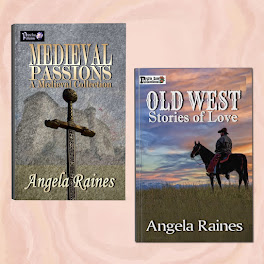
One thing I have discovered as I have researched the California Sierra Nevada Mountains and the adjoining foothills is that there are records of a number of haunted buildings and “spots,” especially dating back to the gold rush era, but including later decades in the 1800s. California was a rough place to live—and, sometimes, a rough place to die.
Some previous posts of haunted buildings I have published are The White Lady of the Bridgeport Inn, please CLICK HERE, Haunted City Hotel in Columbia, California, please CLICK HERE, and Columbia, California’s Haunted Fallon House & Theater, please CLICK HERE.
Sonora, California is the county seat of Tuolumne County and is about four miles south of Columbia. Today’s post will share a few details about one of the alleged haunted places in Sonora—the Gunn House.
Background History on the Gunn House:
The Gunn House, the oldest building still in existence in Sonora, dates back to 1850.
The first two-story adobe structure in town, it was built by Lewis Gunn. Mr. Gunn originally came to the Sonora area to mine for gold. After months of fruitless attempts, which he described as just “digging holes,” he decided instead to draw upon his limited medical knowledge and some apothecary information he had to serve the medical needs of the community. Since there were no trained medical doctors in Sonora at the time, he filled a need by helping cure cases of scurvy caused by not eating enough vitamin C in the form of leafy greens or other fresh foods, dysentery from drinking bad water, and helping with stiff backs and arthritic legs that resulted from miners spending so much time stooped or bent over in or next to streams and patches of dirt while searching for gold. It is estimated he saved many lives and benefited many in the area.
After Mr. Gunn built his house, he became Tuolumne County Recorder and used his building to store county records. He saved a generous amount from his portion of the fees paid to file land and mining claims to the point in November of 1850, he bought an interest in the Sonora Herald, the local newspaper, which ceased publication in about 1854.
In 1850, Lewis Gunn’s wife, Elizabeth, and their four children left their home in Pennsylvania and traveled to California on a ship by way of Cape Horn. They arrived in August of 1851, where the appreciative citizens of Sonora who had benefited from Mr. Gunn’s medical assistance warmly welcomed them. The family lived on the second floor, and the newspaper and county recorder’s records were housed on the ground floor.
The Gunn family stayed in the home for about ten years before moving to San Francisco. The house was sold and used as a hospital until about 1899 or early 1900.
 |
| Italia Hotel - 1934 |
After that, it was sold to the Bisordi family. The building was remodeled into a hotel and boardinghouse. At first called the Rosa Italia Hotel, the name was later shortened to Italia. The business was overseen by the family matriarch, Josephine. She handled the cooking, which became quite well-known locally. Her husband, Anacleto, focused on running the saloon and gaming parlor in the former Room #3.
In 1962, the hotel was purchased by Margaret Dienelt. She renamed it the Gunn House Hotel and added a landscaped garden, patio, and swimming pool. In 2002, Mike and Shirley Sarno bought the building and did considerable restoration work. You may see the building as it appears today, the Gunn House Motor Hotel, by CLICKING HERE.
In spite of all the changes to this oldest building dating back to 1850, the original adobe structure remains intact and forms the core of all the additions and renovations.
The Ghosts of Gunn House:
There are a slew of ghosts that have been seen, experienced, and reported by guests and staff over the years.
In Room #10, a man was reportedly hurled out of bed by a violent entity, which had no intention of letting him stay the night.
In Room #11, overnight guests have been awakened to find an unseen entity rearranging the furniture in the room. An oft-reported experience has been for guests to wake in the morning to find all thirteen of the pictures hanging skewed, even though nothing occurred during the night that might have dislodged them from their positions. Some guests have reported hearing a sound similar to the rattling of coins.
The most haunted is Room #12. Guests have opened their door to a terrifying apparition. Others have reported seeing a man in an old-fashioned suit standing at the end of their four poster bed.
In other rooms, a ghost has been known to hop into bed with couples, while others have reportedly felt the sensation of being watched.
Hauntings are not confined to guest suites. On several occasions, the apparition of a matronly lady has appeared in the parlor room fireplace. Others have seen a shadowy apparition appear on the stairs.
Paranormal experts theorize that the ghostly activity dates back to the thirty or so years that the building was used as a hospital.
Reservations, anyone?
I focused on Sonora, California, research while plotting and writing my recent book, A Watchman for Willow, part of the Mail Order Papa series. At the time my story is set in 1886, the Gunn House would have been a hospital. To find the book description and purchase options for this book, please CLICK HERE
My most recent release is my Old Timey Holiday Kitchen series book, VinegarPie by Varinia. To find the book description and purchase options for this book, please CLICK HERE
Sources:
Williams, Nancy K., Haunted Hotels of the California Gold Country. Charleston, S.C.: Haunted America, a Division of The History Press. 2014, pages 116-121.
https://www.hauntedplaces.org/item/gunn-house-hotel/
































